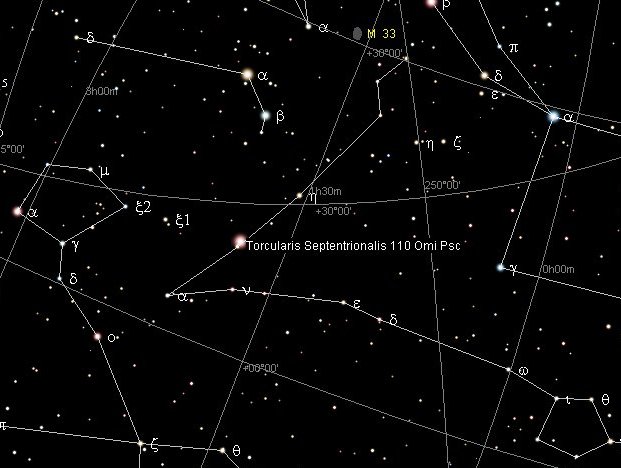107. To be like a Fox is to see opportunities: ... The Arabs in the desert regarded it as a test of penetrating vision; and they were accustomed to oppose 'Suhel' to 'Suha' (Canopus to Alcor) as occupying respectively the highest and lowest posts in the celestial family. So that Vidit Alcor, et non lunam plenum, came to be a proverbial description of one keenly alive to trifles, but dull of apprehension for broad facts ...
... Proclus informs us that the fox star nibbles continuously at the thong of the yoke which holds together heaven and earth; German folklore adds that when the fox succeeds, the world will come to its end. This fox star is no other than Alcor, the small star g near zeta Ursae Majoris (in India Arundati, the common wife of the Seven Rishis, alpha-eta Ursae ... I think this 'thong' in time-space connects an end (110 Piscium) to a new beginning.
Gb4-1 depicts a reversed hau tea.
... And then there were Lulal and Laterak, who on the Dendera round zodiac were placed due south of Aries, with Alrisha (the Knot) clearly at the staff of the immortal one. The whip wielded by Laterak looks similar to the cat'o nine tails of Castor (and the februa thongs which Marcus Antonius used for reactivating the Roman ladies) ...
For us, here and now, the opportunity should be to discuss the Chinese system which is beginning with Spica.
When the star of the Lucky King in Aquarius (Sad-al-Malik) culminated (†) the Full Moon would ideally be at the Star-Pillar-in-the-Middle, Ana-roto, Spica (*).
... The internet site (http://idp.bl.uk/education/astronomy/sky.html) has Latin instead of Greek letters for the stars, e.g. 'h And' (15) which I at first interpreted as θ Andromedae because Θ is number 8 in the Greek alphabet, similar to how H is number 8 in the Latin alphabet. Thus I tried with θ also at 'h Tau' (18). There is no sound h in the Greek alphabet. Notably, Greek θ is similar in design to Phoenician heth, said to be the origin of Η, the capital of η, (cfr at Kb5), which in turn became the origin of Latin H. Although η is Greek letter number 7 in the alphabet its value as a numeral was 8. And in the Latin alphabet H is the 8th letter. Then I changed my mind, because I have both θ¹ and θ² Tauri in my star list, and considering the way the Chinese list has detailed with indices the stars at Root (3) and Tail (6) it appeared unlikely that the creator of the list would have missed an index on θ Tauri. Furthermore, η Tauri is Alcyone, clearly an important star. Alcyone is one of the last stars of winter before Atlas will raise the sky roof high to let in spring and Alcyone could very well be associated with a hairy head (so much hair as to cover the 'face') .... The reason for not using Greek letters in the Chinese system was presumably to underline that its 28 stations were intended to list the nakshatra stations at the Full Moon, each of them ideally measuring 15 right ascension days. 414 (February 18) - 327 (November 23) = 87 → 360 / 6 + 27 ('thrice hallowed days'). ... The worship of the Divine Child was established in Minoan Crete, its most famous early home in Europe. In 1903, on the site of the temple of Dictaean Zeues - the Zeus who was yearly born in Rhea's cave at Dicte near Cnossos, where Pythagoras spent 'thrice nine hallowed days' of his initiation - was found a Greek hymn which seems to preserve the original Minoan formula in which the gypsum-powdered, sword-dancing Curetes, or tutors, saluted the Child at his birthday feast. In it he is hailed as 'the Cronian one' who comes yearly to Dicte mounted on a sow and escorted by a spirit-throng, and begged for peace and plenty as a reward for their joyful leaps ....
80 + 27 = 107 → 472 - 365 = 3 * 157 (→ June 6) - 364.
|
|||||||||||||||||||||||||||||||||||||||||||||||||||||||||||||||||||||||||||||||||||||||||||||||||||||||||||||||||||||||||||||||||||||||||||||||||||||||||||||||













